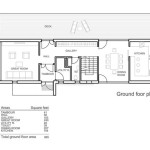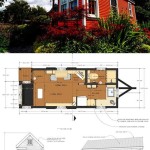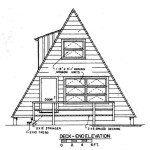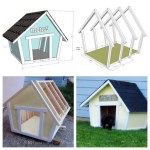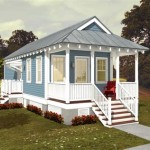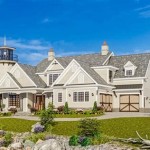House plans with carport are residential designs that incorporate a covered parking area attached or adjacent to the house. This design element is highly sought after in areas with inclement weather or where protection from the elements is desired for vehicles.
Carports offer several advantages over traditional garages. They provide sheltered parking while allowing for natural ventilation and maintaining an open feel. This can be especially beneficial in warm climates or for those who prefer not to store their vehicles in an enclosed space. Additionally, carports often require less maintenance and can be more cost-effective to construct than fully enclosed garages.
In the upcoming sections, we will delve deeper into various aspects of house plans with carports. We will explore the different design options, construction considerations, and how to choose the most suitable plan for your needs.
When considering house plans with carport, there are several key points to keep in mind:
- Size and dimensions
- Roof type and materials
- Attachment to the house
- Materials and finishes
- Cost and maintenance
- Building codes and permits
- Personal preferences
- Future expansion
- Resale value
Considering these factors will help you make an informed decision and choose the best house plan with carport for your needs.
Size and dimensions
The size and dimensions of a carport are important considerations to ensure it meets your needs and fits well on your property.
- Length
The length of the carport should be sufficient to accommodate your vehicles comfortably. Consider the length of your longest vehicle and allow for some additional space for maneuverability.
- Width
The width of the carport should be wide enough to allow for easy entry and exit of your vehicles. Consider the width of your vehicles, including mirrors, and allow for some additional space on either side.
- Height
The height of the carport should be high enough to accommodate your vehicles without clearance issues. Consider the height of your tallest vehicle and add some additional space for taller passengers or cargo.
- Overall dimensions
The overall dimensions of the carport should fit well on your property and complement the size and style of your house. Consider the available space, setbacks, and any architectural features that may affect the design.
Determining the appropriate size and dimensions for your carport will help ensure it meets your functional needs and aesthetic preferences.
Roof type and materials
The roof type and materials used for a carport can impact its durability, cost, and aesthetic appeal. Here are some common options to consider:
- Asphalt shingles
Asphalt shingles are a popular and affordable roofing option for carports. They are available in a variety of colors and styles, and they offer good protection against the elements. However, asphalt shingles can have a relatively short lifespan, and they may require more maintenance than other roofing materials.
- Metal roofing
Metal roofing is a durable and long-lasting option for carports. It is resistant to fire, insects, and rot, and it can withstand high winds and heavy snow loads. Metal roofing is also relatively low-maintenance, and it can be painted to match the color of your house or other exterior elements.
- Tile roofing
Tile roofing is a beautiful and durable option for carports. It is available in a variety of colors and styles, and it can add a touch of elegance to your home. However, tile roofing can be more expensive than other roofing materials, and it may require more maintenance.
- Polycarbonate roofing
Polycarbonate roofing is a lightweight and shatter-resistant option for carports. It allows natural light to pass through, so it can help to brighten up your carport and reduce the need for artificial lighting. However, polycarbonate roofing can be more expensive than other roofing materials, and it may not be as durable.
When choosing a roof type and materials for your carport, consider the climate in your area, your budget, and your personal preferences.
Attachment to the house
The attachment of a carport to the house can vary depending on the design and layout of the property. Here are some common options:
- Attached carport
An attached carport is connected to the house by one or more walls. This type of carport offers the most protection from the elements and can be easily accessed from the house. However, attached carports can be more expensive to build than detached carports, and they may require modifications to the house’s roofline.
- Detached carport
A detached carport is not connected to the house. It is a stand-alone structure that is typically located in the backyard or driveway. Detached carports are less expensive to build than attached carports, and they offer more flexibility in terms of placement. However, detached carports may not offer as much protection from the elements, and they may require a longer walk to access from the house.
- Semi-attached carport
A semi-attached carport is connected to the house by one wall, but it has a separate roofline. This type of carport offers a compromise between the cost and protection of an attached carport and the flexibility and affordability of a detached carport.
- Lean-to carport
A lean-to carport is attached to the house by one wall and has a sloped roof that leans against the house. This type of carport is less expensive to build than an attached carport, but it may not offer as much protection from the elements.
When choosing the attachment type for your carport, consider the climate in your area, your budget, and your personal preferences.
Materials and finishes
The materials and finishes used for a carport can impact its durability, cost, and aesthetic appeal. Here are some common options to consider:
- Concrete
Concrete is a durable and affordable option for carport flooring. It is resistant to fire, insects, and rot, and it can withstand heavy loads. However, concrete can be cold and uncomfortable to walk on, and it may require sealing to prevent cracking.
- Asphalt
Asphalt is another durable and affordable option for carport flooring. It is similar to concrete in terms of its performance, but it is typically less expensive. However, asphalt can be more susceptible to cracking and fading than concrete.
- Pavers
Pavers are a more expensive option for carport flooring, but they offer a more attractive and customizable look. Pavers are available in a variety of colors and styles, and they can be arranged in different patterns to create a unique look. However, pavers can be more difficult to install and maintain than concrete or asphalt.
- Gravel
Gravel is the most affordable option for carport flooring. It is easy to install and maintain, and it can provide good drainage. However, gravel can be dusty and uncomfortable to walk on, and it may require periodic replenishment.
When choosing materials and finishes for your carport, consider the climate in your area, your budget, and your personal preferences.
Cost and maintenance
Initial construction costs
The cost of building a carport will vary depending on a number of factors, including the size, design, materials, and location. However, as a general rule, carports are less expensive to build than garages. This is because they do not require the same level of structural support or enclosed space.The cost of a basic carport can start at around $5,000, while more elaborate designs can cost upwards of $20,000. The cost of materials will also vary depending on the type of materials used. For example, a carport with a metal roof will typically be more expensive than a carport with an asphalt shingle roof.
Ongoing maintenance costs
Carports require less maintenance than garages, but they will still require some occasional maintenance to keep them in good condition. This maintenance may include cleaning the roof and gutters, repairing any damage to the structure, and resealing the flooring.The cost of ongoing maintenance will vary depending on the type of carport and the materials used. However, as a general rule, the maintenance costs for a carport will be lower than the maintenance costs for a garage.
Energy efficiency
Carports can help to improve the energy efficiency of your home by providing shade for your vehicles. This can help to reduce the amount of heat that is absorbed by your vehicles, which can lead to lower energy costs.
Resale value
Carports can add to the resale value of your home, especially if they are well-maintained and complement the style of your home. Potential buyers may appreciate the convenience and protection that a carport offers, and they may be willing to pay more for a home that has one.
Overall, carports are a cost-effective and low-maintenance way to protect your vehicles from the elements. They can also add to the value of your home and improve its energy efficiency.
Building codes and permits
Before you build a carport, it is important to check with your local building department to see if there are any building codes or permits required. Building codes are regulations that govern the construction of buildings and other structures, and they are in place to ensure that buildings are safe and habitable. Permits are typically required for any work that is done on a building, and they help to ensure that the work is done in accordance with the building code.
- Setbacks
Setbacks are the minimum distances that a structure must be set back from property lines and other structures. Setbacks are in place to ensure that buildings are not built too close to each other and that there is enough space for emergency access and maintenance. The setback requirements for carports will vary depending on the local building code, but they typically range from 5 to 10 feet.
- Height restrictions
Height restrictions limit the height of buildings and other structures. Height restrictions are in place to ensure that buildings do not obstruct views or interfere with air traffic. The height restrictions for carports will vary depending on the local building code, but they typically range from 10 to 15 feet.
- Materials and construction
Building codes also regulate the materials and methods that can be used to construct buildings and other structures. These regulations are in place to ensure that buildings are safe and durable. The building code will specify the minimum requirements for the materials and construction of carports, including the size and spacing of the posts, the thickness of the roof, and the type of roofing materials that can be used.
- Inspections
Building codes typically require that buildings and other structures be inspected by a building inspector before they can be occupied. The building inspector will check to make sure that the building has been constructed in accordance with the building code. If the building inspector finds any violations of the building code, they may require the builder to make corrections before the building can be occupied.
It is important to note that building codes and permits can vary from one jurisdiction to another. It is always best to check with your local building department to see what the specific requirements are in your area.
Personal preferences
Personal preferences play a significant role in the design and construction of a carport. Here are some common personal preferences to consider when planning a carport:
- Style
The style of the carport should complement the style of the house and the surrounding landscape. There are many different styles of carports to choose from, including traditional, modern, and contemporary. The style of the carport should also be consistent with the architectural features of the house and the overall aesthetic of the property.
- Size
The size of the carport should be large enough to accommodate the vehicles that will be parked in it. It is also important to consider the amount of space that is needed for maneuvering vehicles in and out of the carport. The size of the carport should also be proportional to the size of the house and the lot.
- Materials
The materials used to construct the carport should be durable and weather-resistant. The materials should also be compatible with the style of the house and the surrounding landscape. There are many different materials to choose from, including wood, metal, and concrete. The cost of the materials should also be considered when making a decision.
- Features
The carport can be customized with a variety of features, such as lighting, storage, and even a ceiling fan. The features that are included in the carport should be based on the individual needs and preferences of the homeowner. The cost of the features should also be considered when making a decision.
By considering personal preferences, homeowners can create a carport that meets their specific needs and desires. A well-designed carport can be a valuable addition to any home.
Future expansion
Expanding the carport
If you think you may need more space in the future, you can design your carport with future expansion in mind. This may involve adding additional posts or footings to the carport so that it can be easily expanded in the future.
- Adding a second bay
One way to expand your carport is to add a second bay. This will give you more space to park your vehicles or store other items.
- Extending the length
Another way to expand your carport is to extend the length. This will give you more space to park longer vehicles or to store larger items.
- Enclosing the carport
If you need more enclosed space, you can enclose the carport. This will create a garage that can be used for parking vehicles, storage, or other purposes.
- Adding a second story
If you need more space for living or storage, you can add a second story to the carport. This will create a bonus room that can be used for a variety of purposes, such as a home office, a guest room, or a playroom.
By designing your carport with future expansion in mind, you can create a structure that will meet your needs for years to come.
Planning for future expansion
When planning for future expansion, it is important to consider the following factors:
- The size of the property
The size of the property will determine how much space you have for future expansion. If you have a small lot, you may not be able to expand the carport very much.
- The location of the carport
The location of the carport will also affect how much you can expand it. If the carport is located close to the house or other structures, you may not be able to expand it very much.
- The budget
The budget will also play a role in how much you can expand the carport. Expanding the carport can be a costly project, so it is important to factor in the cost when planning for future expansion.
By considering these factors, you can develop a plan for future expansion that is realistic and affordable.
Benefits of future expansion
There are several benefits to designing your carport with future expansion in mind. These benefits include:
- Increased flexibility
A carport with future expansion potential gives you the flexibility to change your mind about how you use the space in the future. If you need more space for parking, storage, or living, you can easily expand the carport to meet your needs.
- Increased value
A carport with future expansion potential can increase the value of your home. Potential buyers will appreciate the flexibility and the potential for future expansion.
- Peace of mind
Knowing that you have the potential to expand your carport in the future can give you peace of mind. You won’t have to worry about outgrowing your carport or having to build a new one if your needs change.
If you are planning to build a carport, it is worth considering designing it with future expansion in mind. The benefits of future expansion are numerous, and it can give you the flexibility and peace of mind that you need.
Resale value
Impact of carports on resale value
Carports can have a positive impact on the resale value of a home. Potential buyers appreciate the convenience and protection that a carport offers, and they may be willing to pay more for a home that has one. In addition, carports can add to the curb appeal of a home, which can also lead to a higher resale value.
- Convenience
Carports offer a convenient place to park vehicles, especially in inclement weather. Potential buyers will appreciate not having to park their cars in the driveway or on the street, and they may be willing to pay more for a home that has a carport.
- Protection
Carports provide protection for vehicles from the elements, such as sun, rain, snow, and hail. This can help to extend the life of vehicles and prevent costly repairs. Potential buyers will appreciate the peace of mind that comes with knowing that their vehicles are protected from the elements, and they may be willing to pay more for a home that has a carport.
- Curb appeal
Carports can add to the curb appeal of a home by providing a finished look to the exterior. A well-designed carport can complement the style of the home and make it more attractive to potential buyers. In addition, carports can help to frame the front of the home and create a more inviting entrance.
Overall, carports can have a positive impact on the resale value of a home. Potential buyers appreciate the convenience, protection, and curb appeal that carports offer, and they may be willing to pay more for a home that has one.
Factors that affect the resale value of carports
The resale value of a carport is affected by a number of factors, including:
- Size
The size of the carport will affect its resale value. A larger carport will typically have a higher resale value than a smaller carport. This is because a larger carport can accommodate more vehicles and provide more protection from the elements.
- Style
The style of the carport will also affect its resale value. A carport that is designed to complement the style of the home will typically have a higher resale value than a carport that is not. This is because a well-designed carport can add to the curb appeal of the home.
- Materials
The materials used to construct the carport will also affect its resale value. A carport that is constructed with durable materials, such as metal or concrete, will typically have a higher resale value than a carport that is constructed with less durable materials, such as wood.
- Condition
The condition of the carport will also affect its resale value. A carport that is well-maintained and in good condition will typically have a higher resale value than a carport that is not. This is because a well-maintained carport will be more attractive to potential buyers and will require less maintenance in the future.
By considering these factors, homeowners can build a carport that will have a high resale value.
Maximizing the resale value of a carport
There are a number of things that homeowners can do to maximize the resale value of their carport. These include:
- Building a carport that is the right size for the home
The size of the carport should be proportional to the size of the home. A carport that is too large or too small will not be as attractive to potential buyers.
- Choosing a carport style that complements the home
The style of the carport should complement the style of the home. A carport that is not designed to complement the home will not add to the curb appeal and may actually decrease the resale value of the home.
- Using durable materials to construct the carport
The materials used to construct the carport should be durable and weather-resistant. Durable materials will help to extend the life of the carport and will require less maintenance in the future.
- Maintaining the carport in good condition
The carport should be well-maintained and in good condition. A well-maintained carport will be more attractive to potential buyers and will require less maintenance in the future.
By following these tips, homeowners can build a carport that will have a high resale value and will be an attractive addition to their home.










Related Posts

